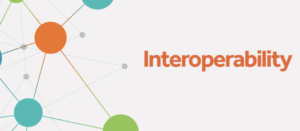Choosing a UI development framework stands out as a challenging decision for any software architect. Consider the following aspects when making a choice for a ui development framework. Choosing the right UI framework is crucial for building successful and efficient web applications.
Learning Curve
Learning ease is a critical factor in evaluating a UI framework. An effective framework should facilitate the learning process for junior to mid-level software developers. Beyond basic applications, tasks such as input validation, user state management, error handling, site navigation control, and integration with back-end components like RESTful Web services should be manageable. If a junior developer struggles to swiftly create a prototype addressing these functionalities, it could indicate that the chosen UI development framework might be too complex for practical learning.

Framework Complexity
Considering the overall complexity is essential when assessing a UI development framework. The primary purpose of adopting such a framework is to streamline the labor-intensive aspects of enterprise application development. This involves simplifying tasks like error handling and back-end integration. While providing ease for developers is valuable, it’s crucial that there’s transparency about the underlying processes. If the framework’s underlying technology is excessively intricate, troubleshooting complex issues can become challenging, and developers may find it difficult to grasp the inner workings.

It’s crucial for a developer to gain a solid understanding of how a framework operates after learning it. If a developer struggles to comprehend the inner workings of a Web or UI development framework, it may be a signal that the framework is excessively complex. A practical test involves taking a moderately complex segment of an existing application and evaluating how well a mid-level developer can replicate that functionality using the UI framework under consideration. If the implementation encounters significant issues or if challenges are resolved without a clear understanding of the underlying reasons, these are red flags indicating that the framework may be too intricate.
Interoperability of a UI development framework with standard technology
Considering the overall application lifecycle management process is crucial, with ongoing maintenance being a significant part of it. Here’s the importance of interoperability with standard technologies in this context.

- Developer Availability: An organization may not always find developers with expertise in a specific framework. However, developers proficient in standard technologies such as JavaScript, HTML, Java, and CSS are widely available. A framework that aligns with these standards ensures a broader pool of developers can contribute to the application’s development and maintenance.
- Mitigating Skill Gaps: If a UI development framework encounters difficulties when integrating standard technologies like JavaScript or experiences rendering issues with Java Standard Tag Libraries, it jeopardizes the interoperability. This can lead to challenges in hiring, onboarding, and maintaining a development team, potentially impacting the organization’s ability to sustain and evolve its codebase.
- Easy Integration: A good UI framework seamlessly integrates with existing web development technologies. This includes smooth collaboration with standard JavaScript practices and compatibility with widely used languages and libraries. This interoperability ensures that developers can leverage their skills in familiar technologies without encountering unnecessary obstacles when working with the framework.
- Reducing Dependency Risks: By choosing a UI development framework that harmonizes with standard technologies, an organization reduces dependency risks. If there’s a need to transition to a different framework or technology stack in the future, the integration process is likely to be smoother, minimizing disruptions in application development and maintenance.
- Long-Term Viability: Interoperability with standard technologies contributes to the long-term viability of the application. As technologies evolve and frameworks undergo updates, a framework that aligns with established standards is better positioned to adapt to changes, ensuring the continued support and maintenance of the application.
In summary, a UI development framework’s ability to easily integrate with standard technologies is pivotal for the overall success of application lifecycle management. It not only ensures a wider talent pool for development but also mitigates risks associated with changing technologies and facilitates long-term sustainability.
Ability to handle and solve common problems
The capability of a UI development framework to effectively handle and solve common problems is a critical factor in its suitability for application development. Here’s why this ability is essential.
- Streamlined Development: A good UI framework should provide built-in solutions or clear patterns for addressing common challenges encountered in web application development. This includes handling user input, managing state, implementing navigation, and dealing with common security considerations. The framework’s ability to offer effective solutions to these routine issues streamlines the development process.
- Consistency in Implementations: The framework’s approach to solving common problems should promote consistency across different parts of the application. This ensures that developers follow best practices and maintain a coherent structure, making it easier for team members to understand and collaborate on the codebase.
- Error Handling and Debugging: The framework should facilitate effective error handling and debugging mechanisms. This includes providing informative error messages, clear logging, and tools for diagnosing and resolving issues. A framework that simplifies the process of identifying and addressing common errors contributes to a more robust and maintainable application.
- Community Support and Resources: A framework with a supportive community and ample documentation can be valuable in addressing common problems. The availability of forums, tutorials, and online resources enables developers to find solutions quickly and learn from the experiences of others.
- Scalability: Assess how well the framework handles scalability challenges commonly encountered as applications grow. This involves considerations such as optimizing performance, managing increased data loads, and ensuring responsiveness. A framework that addresses scalability concerns from the outset allows for more seamless growth as the application evolves.
- Adaptability to Evolving Standards: The ability of the framework to adapt to evolving web standards and best practices is crucial. This ensures that common problems are addressed in alignment with the latest industry standards, reducing the risk of deprecated or outdated solutions.
- Integration with External Services: Evaluate the framework’s ability to integrate with external services and APIs, as this is a common requirement in modern web development. A framework that simplifies the integration process contributes to the overall efficiency of the application.
By excelling in handling and solving common problems, a UI development framework empowers developers to focus on building application features rather than grappling with routine challenges. This, in turn, leads to more efficient development cycles, enhanced code quality, and a positive overall development experience.
Adaptability of a UI development framework with emerging technologies
The adaptability of a UI development framework with emerging technologies is crucial for ensuring the long-term relevance and sustainability of an application. Here’s why adaptability is an essential criterion.
- Future-Proofing: An effective UI framework should be capable of incorporating emerging technologies seamlessly. As the tech landscape evolves, the framework’s ability to integrate new tools, libraries, and programming paradigms ensures that the application remains relevant and can take advantage of cutting-edge features and improvements.
- Support for Modern Web Standards: Ensure that the framework is aligned with and supports the latest web standards. This includes compatibility with evolving HTML, CSS, and JavaScript specifications. An adaptable framework anticipates and embraces changes in these foundational technologies.
- Compatibility with New Browsers and Devices: As new browsers and devices enter the market, a flexible UI framework should accommodate these changes without requiring extensive modifications. This adaptability ensures that applications built with the framework can reach a wide audience across various platforms.
- Integration with Emerging APIs: The framework should facilitate smooth integration with emerging APIs and services. This is particularly important as the application may need to interact with new backend technologies, cloud services, or other external resources. A framework that supports easy integration with evolving APIs enhances the application’s capabilities.
- Modularity and Extensibility: An adaptable framework is modular and extensible, allowing developers to easily incorporate new features or replace outdated components. This modularity fosters a development environment that can evolve alongside emerging technologies without major disruptions.
- Community and Ecosystem Development: The strength of the framework’s community and ecosystem plays a crucial role in its adaptability. A vibrant community actively contributes to the framework’s development, ensuring that it remains responsive to industry trends and technological advancements.
- Updates and Maintenance: Regular updates and maintenance by the framework’s maintainers are indicators of its commitment to adaptability. Frameworks that release timely updates to address compatibility issues with new technologies demonstrate an ongoing commitment to staying current.
- Technological Flexibility: Assess how well the framework accommodates different architectural patterns and design philosophies. A framework that allows developers to choose the best approach for their specific use case enhances adaptability to emerging trends in software architecture.
By prioritizing adaptability with emerging technologies, a UI development framework becomes a strategic asset rather than a potential bottleneck. It empowers developers to leverage the latest advancements, facilitates easier maintenance, and ensures the application remains competitive in a rapidly changing technological landscape.
Questions & Answers
Q. What UI framework should I use?
Ans. It depends on the project scope or requirement, check above article.
Q. How do I choose the right framework? How to choose GUI framework?
Ans. Depends on several factors, including the complexity of your application, your familiarity with the framework, and the specific requirements of your project.
Q. What is the fastest UI framework?
Ans. React is the fastest library.
Q. How to choose the best frontend framework in 2025?
Ans. Described already.
Q. What is the UI framework?
Ans. A UI framework, also known as a user interface framework or front-end framework, is a pre-prepared collection of code and tools that developers use to create consistent and visually appealing user interfaces for web applications. These frameworks provide a set of reusable components, design patterns, and guidelines to streamline the development process, enhance productivity, and maintain consistency across different parts of an application. React, Angular, View.JS
Q. Which is the smallest UI framework?
Ans. VanJS is the smallest reactive UI framework in the world, with just 0.9kB in the gzipped minified bundle. It’s 50~100 times smaller than most popular alternatives. Guess what you can get from this 0.9kB framework?



